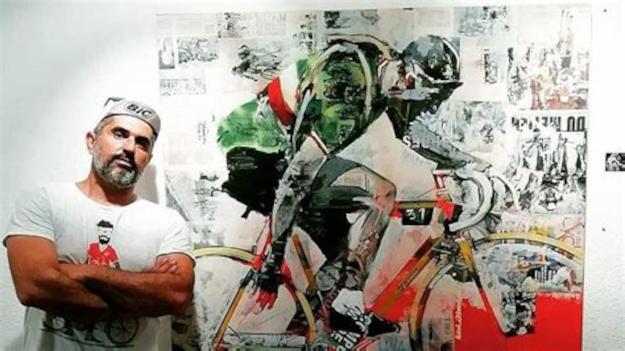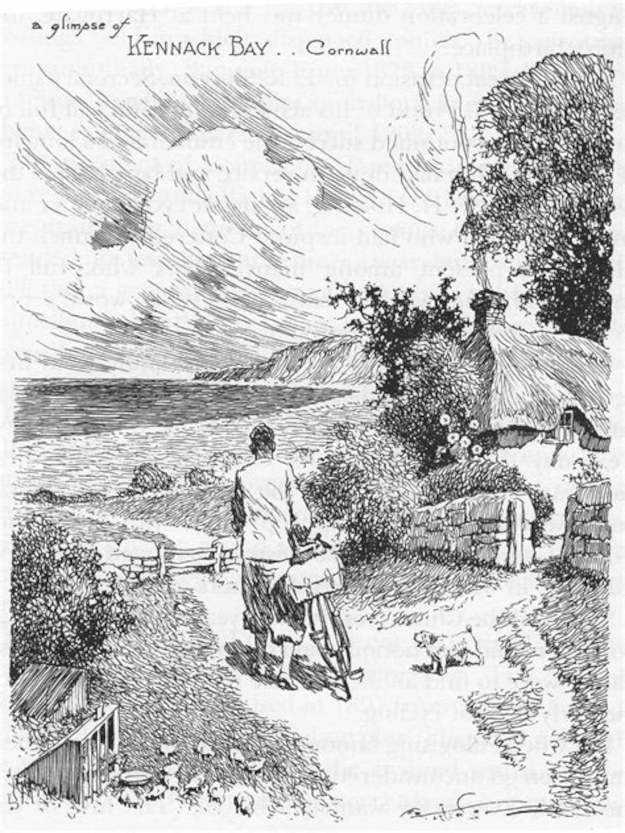Monthly Archives: May 2025
Miguel Soro
Bicycles are much more than a way of transport and artists around the world have demonstrated it through sculptures, songs, books, poems, paintings you name it. Today, you will know Miguel Soro, a former bike professional who rode in Italy, Spain and Portugal. His important point is that he shares his moments, suffering and happinness on bicycle on his pictures due to the fact that he experienced them.
He painted Miguel Indurain, Luis Ocaña, Bernard Hinault, Nairo QuintanaPerico Delgado, Primo Roglic, José Manuel Fuente, Alejandro Valverde, Eddy Merckx among others. As it should be, some of his clients are professional cyclists such as Giamondi or Pogacar. As an ex-sprinter, he also paints fast his collages. He did not go to any art school, rather he is self-taught and only learned from the painter Roberto Martínez Leña.
What is more, if he feels a painting is not enough good, he redoes it or turns it over to create for instance a landscape.

I Visited the Busiest Crossing in the World
Frank Patterson
Frank Patterson (1871 – 1952) is a good example of how one can pedal in a myriad of modes. He participated in what is know as the golden era of cyclist through 26,000 pictures between 1890 and 1952. Such images appeared in the magazines Cycling Weekly, The CTC Gazette, his book The Patterson Book (1948) and several collections about his work.
When he moved from Portsmouth to London in 1890, he already knew how to ride a bike. He had his first bicycle in London where not only did he rode its streets, but also reached the countryside, always making pictures in which his bike was present. At the age of 38 a knee injury that made him unable to pedal for the rest of his life. However, his perseverance provoked continuing creating art in drawings thanks inspired by photographs and postcards sent by friends. In 1944 he was awarded with the Bidlake Memorial Prize which recognized who tried to improve the World through bicycles. For example, some of his pictures got in magazines to the British front in the Second World War, assuring soldiers high morale who dreamed to come home safe and sound in order to pedal such delicious landscapes. He pictured about England, Ireland, Scotland, Gales and France. On 14th September 1974, the Cyclist Touring Club dedicated a plaque in its headquarters in Guilford, England, in his memory.

Why Tokyo Has the BEST Streets in the World
How to Fix America Worst Streets
Janette Sadik-Khan
The New York cyclist revolution started on 9th August 2008 when 11 km of streets, in concrete Centre Street, Lafayette Street, the Fourth Avenue and Park Avenue were closed to road traffic from 7 a.m. to 1 p.m. This attempt to give streets to people was repeated the next two Saturdays. Two were the responsible of it: the former mayor Michael Bloomberg and, specially, the former Commissioner for Transport Janette Sadik-Khan.
The test was a success. More than 300,000 people enjoyed it by walking, riding bikes, playing and dancing. The mark of Janette Sadik-Khan in New York is undeniable: She transformed road space into bicycle lines, pedestrianized squares such as Broadway, Times Square and Herald Square, and launched Citi Bike, the larger net of shared bikes in the USA. This visionary of the bicycle, as was defined by the New York Times, explains that there are thousands of reasons in order not to transform cities on a sustainable mobility and human view, but authorities and the citizens who serve them can not accept dysfunctional streets. They should fight for it and inaction is inexcusable.